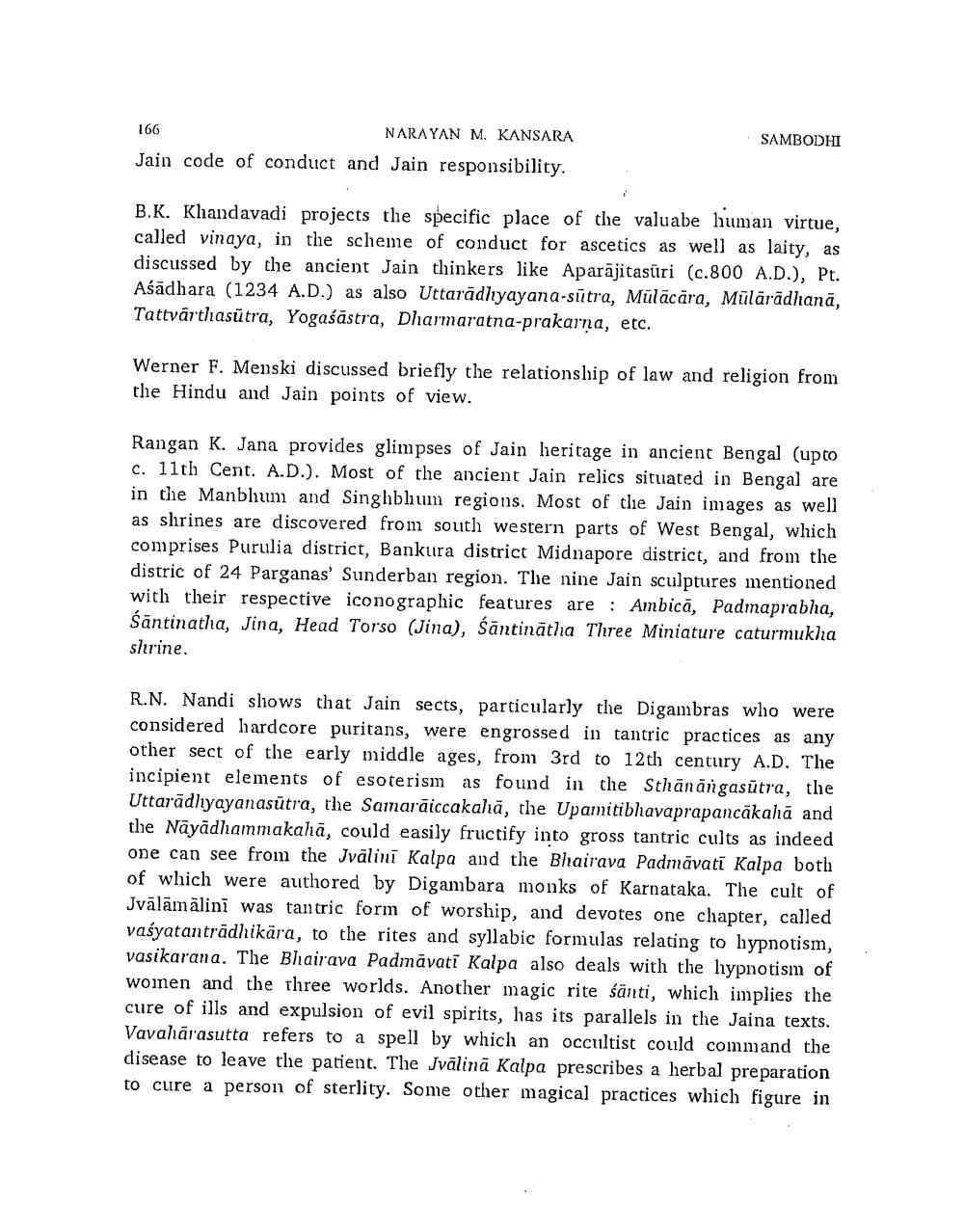________________
SAMBODHI
166
NARAYAN M. KANSARA Jain code of conduct and Jain responsibility.
B.K. Khandavadi projects the specific place of the valuabe human virtue, called vinaya, in the scheme of conduct for ascetics as well as laity, as discussed by the ancient Jain thinkers like Aparajitasüri (c.800 A.D.), Pt. Aśādhara (1234 A.D.) as also Uttarādhyayana-sutra, Mūlācāra, Mülārādhanā, Tattvārthasūtra, Yogaśāstra, Dharmaratna-prakarna, etc.
Werner F. Menski discussed briefly the relationship of law and religion from the Hindu and Jain points of view.
Rangan K. Jana provides glimpses of Jain heritage in ancient Bengal (up to c. 11th Cent. A.D.). Most of the ancient Jain relics situated in Bengal are in the Manbhum and Singhblum regions. Most of the Jain images as well as shrines are discovered from south western parts of West Bengal, which comprises Purulia district, Bankura district Midnapore district, and from the distric of 24 Parganas' Sunderban region. The nine Jain sculptures mentioned with their respective iconographic features are : Ambicā, Padmaprabha, śāntinatha, Jina, Head Torso (Jina), śāntinātha Three Miniature caturmukha shurine.
R.N. Nandi shows that Jain sects, particularly the Digambras who were considered hardcore puritans, were engrossed in tantric practices as any other sect of the early middle ages, from 3rd to 12th century A.D. The incipient elements of esoterism as found in the Sthānāngasūtra, the Uttarādlıyayanasūtra, the Samarāiccakalā, the Upamitibhavaprapancākalā and the Nāyādhammakahā, could easily fructify into gross tantric cults as indeed one can see from the Jvālini Kalpa and the Bhairava Padmavati Kalpa both of which were authored by Digambara monks of Karnataka. The cult of Jvālāmālini was tantric form of worship, and devotes one chapter, called vaśyatantrādhikāra, to the rites and syllabic formulas relating to hypnotism, vasikarana. The Bhairava Padmāvati Kalpa also deals with the liypnotism of woinen and the three worlds. Another magic rite śānti, which implies the cure of ills and expulsion of evil spirits, has its parallels in the Jaina texts. Vavahārasutta refers to a spell by which an occultist could command the disease to leave the patient. The Jvālinā Kalpa prescribes a hierbal preparation to cure a person of sterlity. Some other magical practices which figure in




